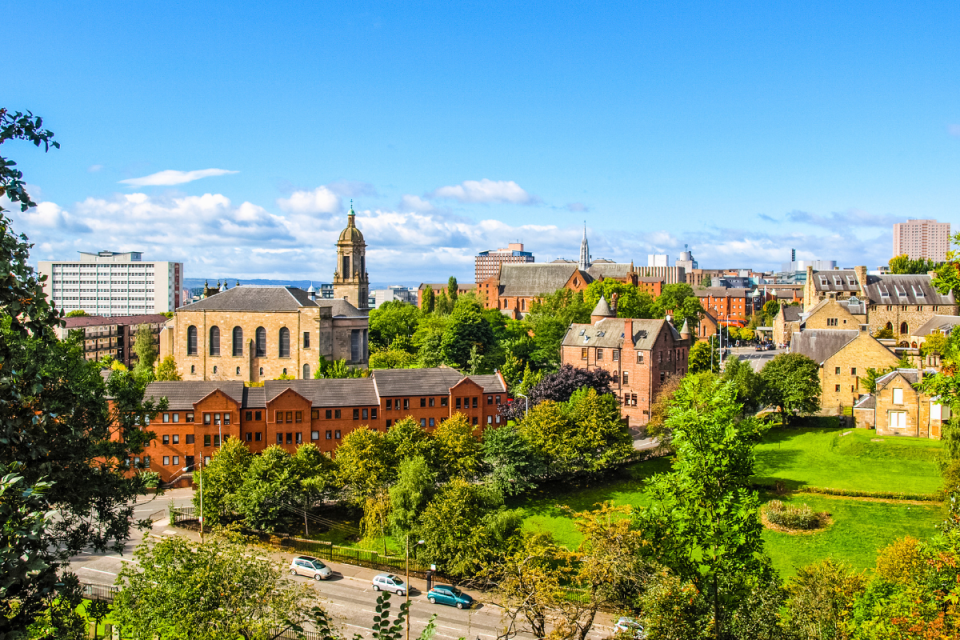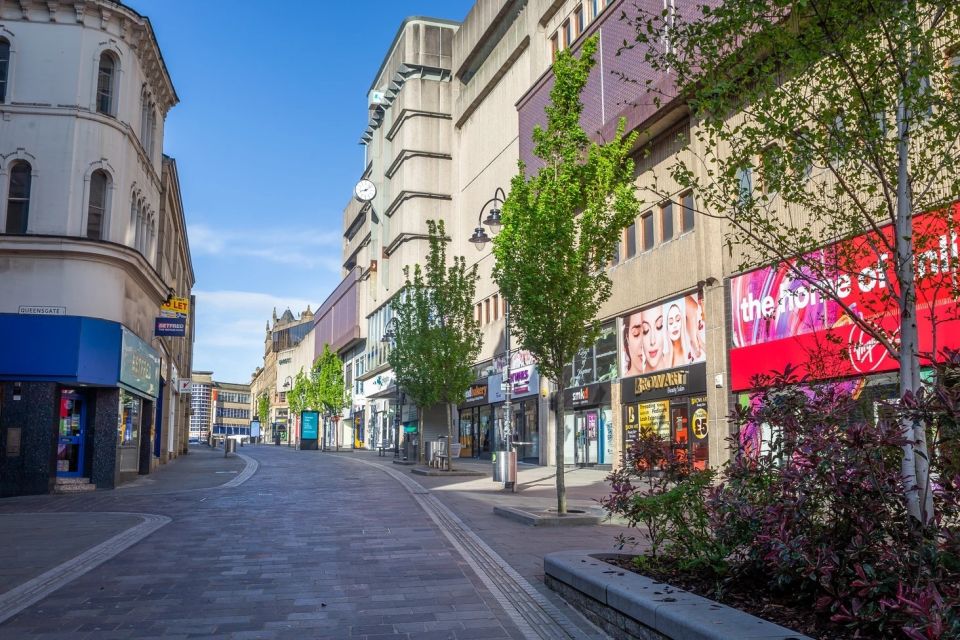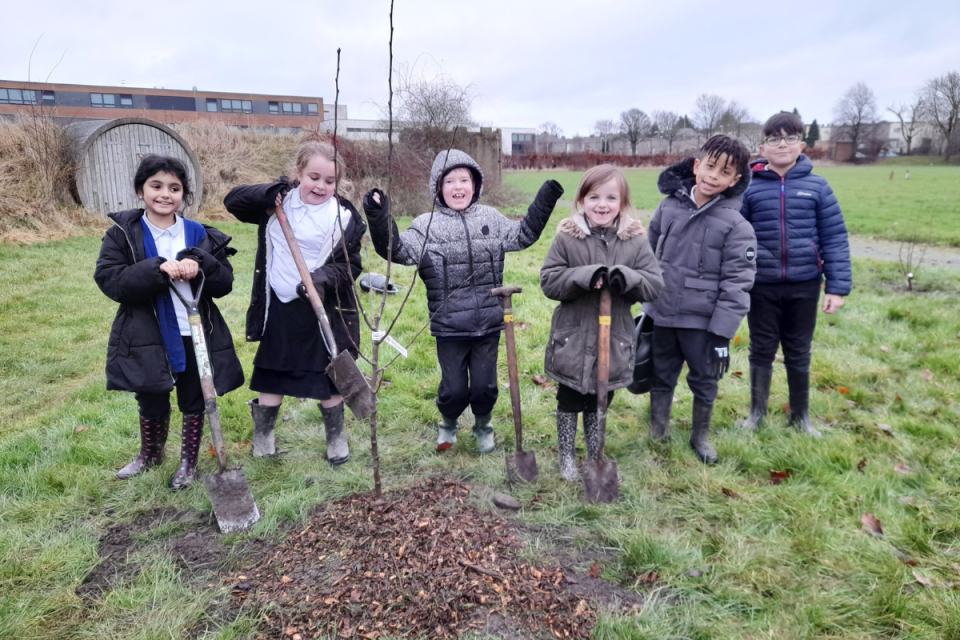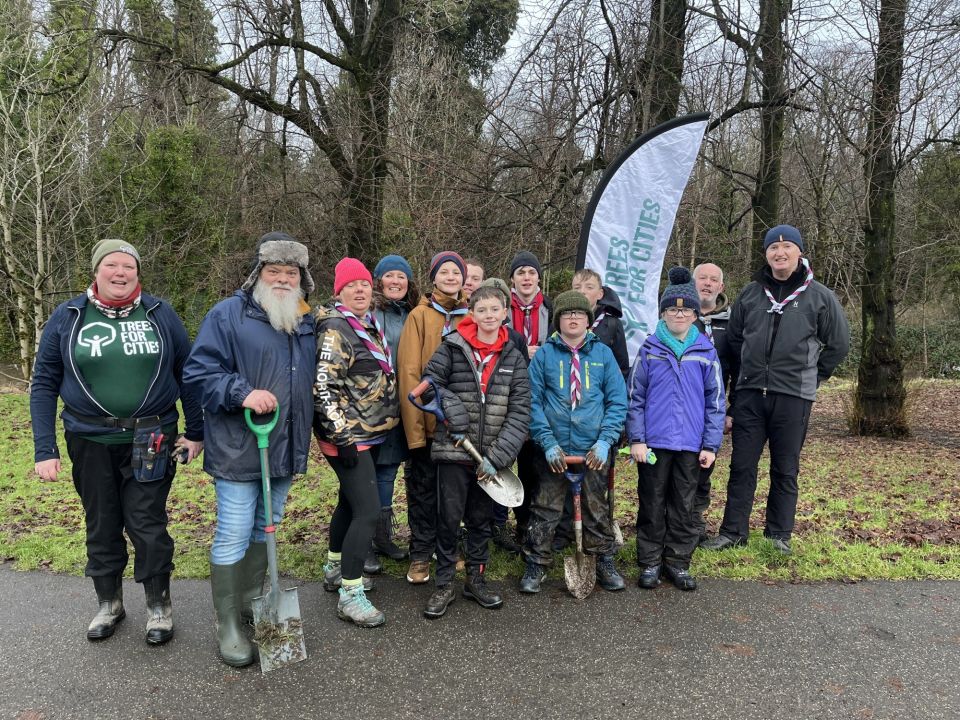What is an urban forest and how do we nurture them?

It’s the International Day of Forests 2024, a United Nations campaign to raise awareness on just how crucial forests are, particularly where their incredible capacity for climate change mitigation is concerned. At Trees for Cities, for the last 30 years we’ve played a critical role in helping grow and protect urban forests across the UK. Here we define urban forests, and delve into how we’re currently supporting their expansion in Bradford and Glasgow as part of our Trees for Climate Action initiative.
Urban forests defined
That tree on your street, maybe the one in your garden - or the tree you pass on the way to work, they’re all part of an urban forest. But what exactly does that mean?
Every tree matters
An urban forest refers to all trees planted within a defined urban area such as a city, town or borough, on both private and publicly owned land. It’s not a ‘forest’ as we traditionally know it, but more of a collective of trees that may be separated by buildings or roads, parks and gardens, but still add up towards - well, an urban forest!

So why is it helpful to group these random trees as a ‘forest’? Viewing them this way helps us take a more holistic approach to tree management. When we assess areas for their needs for new trees, for example, we can look at their current canopy cover and how that compares to the average across the rest of the local area.
It also helps us understand the collective impact of these trees on an urban ecosystem. Trees can help keep temperatures cool, help with flood management, as well as air flow and quality, and by grouping trees together, we can better learn about and appreciate the services they provide.
Nurturing urban forests
Our Trees For Climate Action project in Glasgow and Bradford are great examples of working with a city’s community, and taking action to grow and protect the local urban forest.
In 2019 Bradford Council declared a Climate Emergency, and began working with us to plant a tree for every child. By 2023 there were 55,000 new trees in the ground! Bradford’s current canopy cover is as low as 5% in some areas, which is 11% less than England’s average urban canopy cover, and 15% short of the recommended 20% cover for urban areas. By working with communities and schools, we’re boosting those numbers and helping to foster a sense of guardianship for local nature.

In Glasgow we’re supporting the Clyde Climate Forest with their goal of raising their 17% urban canopy cover to 20% by 2032. With a target of planting 10 trees for every resident of the city region, that’s 18 million more trees across the urban and rural areas, this will add an estimated 1.5 million urban trees - an amazing boost to the city’s current urban forest that will particularly benefit areas most at risk from the impacts of climate change.
Engaging with communities is an essential part of Trees For Climate Action - so we’ve recruited a dedicated officer in each city to help connect people together, and make sure the trees that get planted will be cared for and protected.

Protecting your local forest
You may look at your local trees a bit differently now, knowing that they’re part of something bigger. If you’re wondering if there’s anything you can do to support your town or city’s urban forest - the answer is yes! Whilst planting new trees is vital for continuous canopy cover to replace dying or diseased trees, maintaining our current tree stock is also essential, and everyone can do their bit.
Young trees would love additional watering during dry spells. Councils do provide watering while they’re establishing, but our changing climate is putting a strain on council resources. Your grey water from bathtubs or washing up is perfectly fine for trees, and is a great way to give them the best possible start in life. You can also report damaged trees to your local council, as sometimes early intervention can save a tree.
Why not join one of our free community events? New events go up on our volunteering page, but you can get updates sent straight to your inbox every month by signing up to our Tree Times newsletter.
Donate to Trees for Cities and together we can help cities grow into greener, cleaner and healthier places for people to live and work worldwide.
Donate